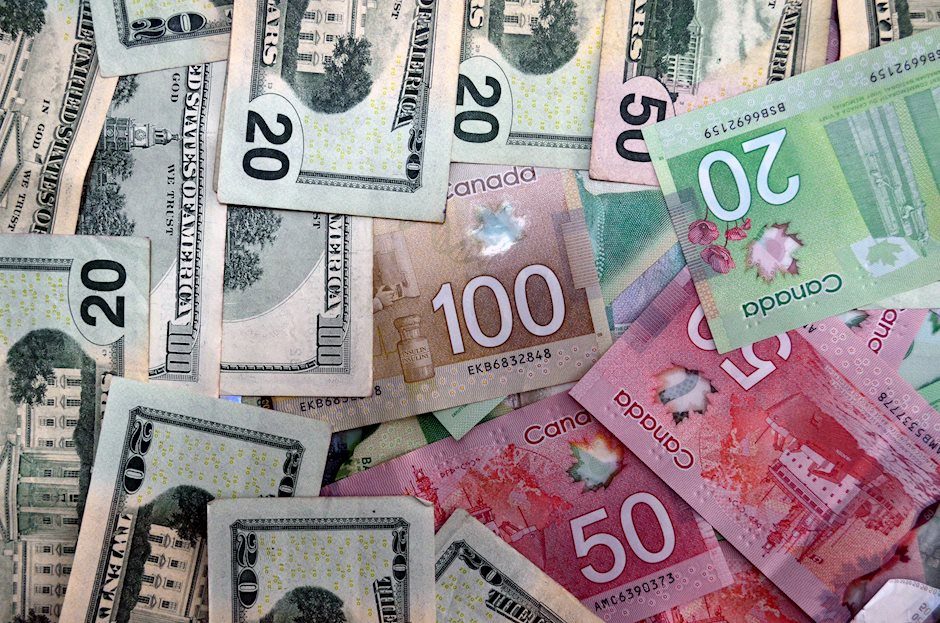USD/CAD weakens below 1.3700 amid rising Fed rate cut bets
- USD/CAD trades with mild losses around 1.3670 in Wednesday’s early Asian session.
- US Retail Sales held steady in June, followed a 0.3% increase in May, in line with expectations.
- The cooler-than-expected Canadian CPI triggered expectations of another rate cut by the BoC next week.

The USD/CAD pair trades in a negative territory near 1.3670 during the early Asian session on Wednesday. The rising speculation of a rate cut by the Federal Reserve (Fed) in September continues to undermine the USD Index (DXY). Investors will monitor US Building Permits, Housing Starts, Industrial Production, and the Fed Beige Book. Also, Fed’s Barkin and Waller are set to speak.
US Retail Sales were unchanged in June and did not change expectations that the Fed would start cutting interest rates in September amid the signs of cooling inflation. Retail Sales in the US held steady at $704.3 billion in June, followed the 0.3% increase (revised from 0.1%) in May, and came in line with the market expectations. Retail sales rose 2.3% on a year-on-year basis in June.
Fed Governor Adriana Kugler said on Tuesday that inflation is on course to reach the Fed's 2% target, with goods, services and now housing contributing to easing price pressures. However, the US central bank still needs more evidence of the rate cut puzzle before considering rate cuts. Fed Chair Jerome Powell stated that recent data has boosted confidence that inflation will ease to the 2% target from its current level about half a percentage point above that mark. Financial markets expect a rate cut in September followed by additional cuts in November and December. This, in turn, weighs on the Greenback against the Loonie.
On the other hand, the softer Canadian Consumer Price Index has spurred expectations that the Bank of Canada (BoC) would cut interest rates further next week. "The inflation data for June gave the Bank of Canada what it needed in order to cut interest rates at next week's meeting," said Katherine Judge, senior economist at CIBC Capital Markets. Meanwhile, the decline in crude oil prices might exert some selling pressure on the Canadian Dollar (CAD) and cap the downside of the pair. It’s worth noting that Canada is the biggest Oil exporter to the United States (US).
Canadian Dollar FAQs
The key factors driving the Canadian Dollar (CAD) are the level of interest rates set by the Bank of Canada (BoC), the price of Oil, Canada’s largest export, the health of its economy, inflation and the Trade Balance, which is the difference between the value of Canada’s exports versus its imports. Other factors include market sentiment – whether investors are taking on more risky assets (risk-on) or seeking safe-havens (risk-off) – with risk-on being CAD-positive. As its largest trading partner, the health of the US economy is also a key factor influencing the Canadian Dollar.
The Bank of Canada (BoC) has a significant influence on the Canadian Dollar by setting the level of interest rates that banks can lend to one another. This influences the level of interest rates for everyone. The main goal of the BoC is to maintain inflation at 1-3% by adjusting interest rates up or down. Relatively higher interest rates tend to be positive for the CAD. The Bank of Canada can also use quantitative easing and tightening to influence credit conditions, with the former CAD-negative and the latter CAD-positive.
The price of Oil is a key factor impacting the value of the Canadian Dollar. Petroleum is Canada’s biggest export, so Oil price tends to have an immediate impact on the CAD value. Generally, if Oil price rises CAD also goes up, as aggregate demand for the currency increases. The opposite is the case if the price of Oil falls. Higher Oil prices also tend to result in a greater likelihood of a positive Trade Balance, which is also supportive of the CAD.
While inflation had always traditionally been thought of as a negative factor for a currency since it lowers the value of money, the opposite has actually been the case in modern times with the relaxation of cross-border capital controls. Higher inflation tends to lead central banks to put up interest rates which attracts more capital inflows from global investors seeking a lucrative place to keep their money. This increases demand for the local currency, which in Canada’s case is the Canadian Dollar.
Macroeconomic data releases gauge the health of the economy and can have an impact on the Canadian Dollar. Indicators such as GDP, Manufacturing and Services PMIs, employment, and consumer sentiment surveys can all influence the direction of the CAD. A strong economy is good for the Canadian Dollar. Not only does it attract more foreign investment but it may encourage the Bank of Canada to put up interest rates, leading to a stronger currency. If economic data is weak, however, the CAD is likely to fall.
Author

Lallalit Srijandorn
FXStreet
Lallalit Srijandorn is a Parisian at heart. She has lived in France since 2019 and now becomes a digital entrepreneur based in Paris and Bangkok.

















